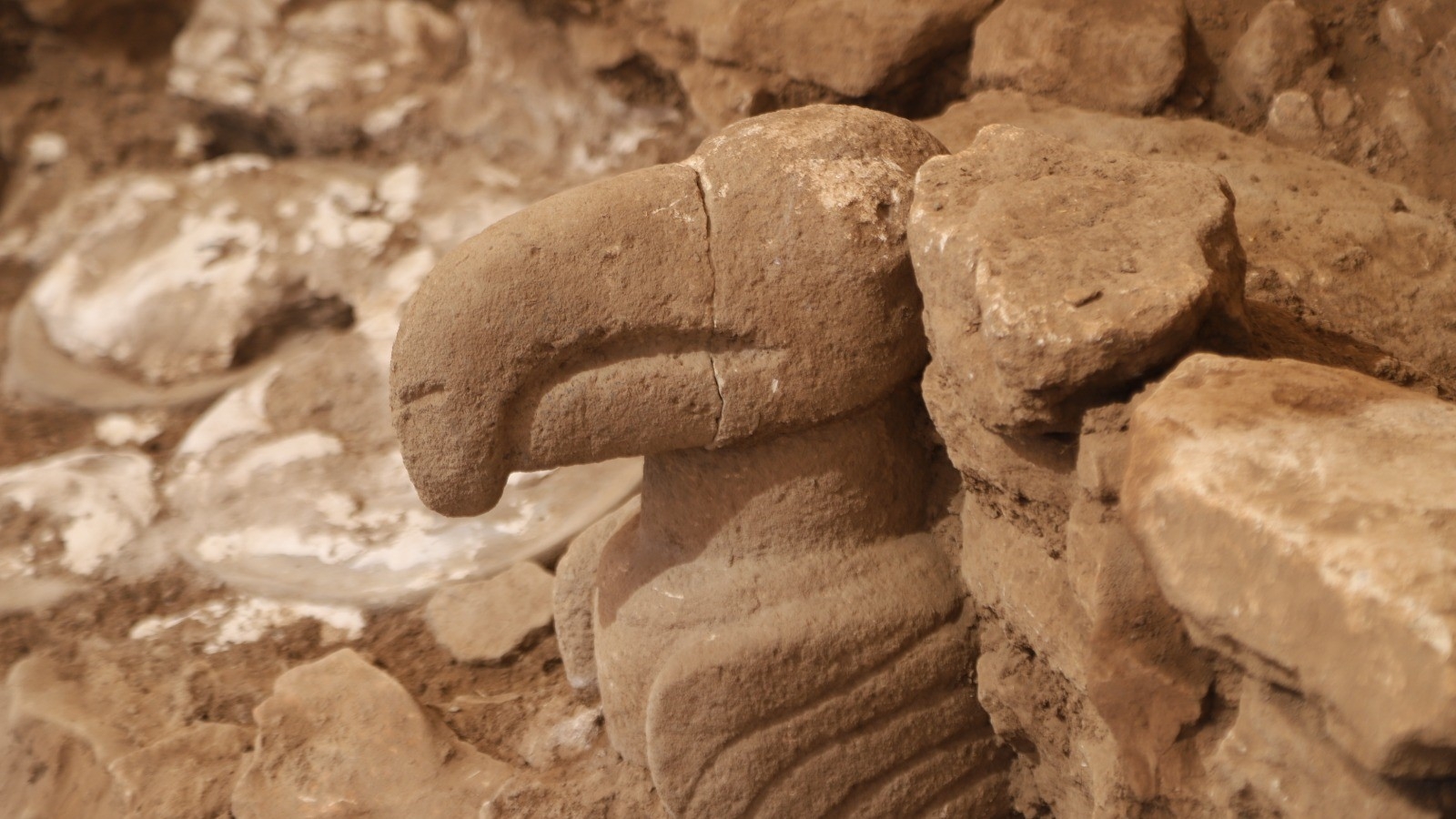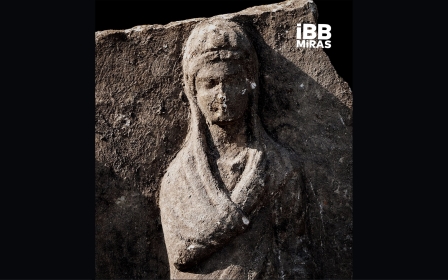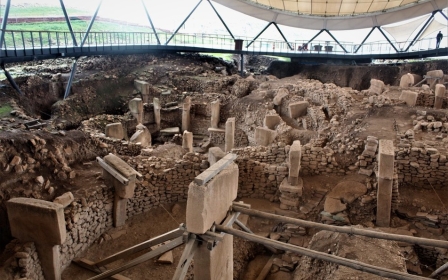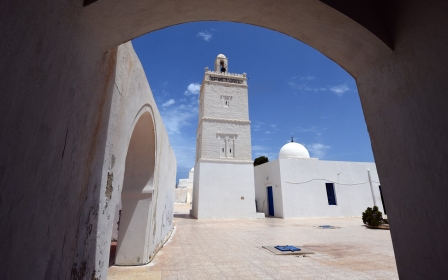Turkey: 'Earliest' painted statue in world unearthed in Gobeklitepe

A statue of a wild boar and a human statue with a life-like expression have been uncovered during archaeological excavations at a 12,000-year-old site in southeastern Turkey, in what could be examples of the oldest sculptures ever discovered.
The boar sculpture was uncovered in Gobeklitepe, meaning “Potbelly Hill” in Turkish, widely considered to contain the oldest known place of worship on earth. The life-size figure is made of limestone and decorated with paintings of a crescent, two snakes and three human faces.
"Red, white and black pigment residues can be seen on its surface, making it the first painted sculpture found from that period to the present day," the Turkish Culture and Tourism ministry claimed in a press release on 30 September.
The human statue was found in Karahan Tepe, a site around 46 kilometres east of Gobeklitepe, which is believed to have belonged to the same extended culture.
It depicts a man 2.3 metres tall with clearly defined facial features and two hands holding an erect phallus, described by the ministry as potentially one of the most impressive examples of prehistoric art ever found.
Stay informed with MEE's newsletters
Sign up to get the latest alerts, insights and analysis, starting with Turkey Unpacked
A statue of a vulture and multiple stone plates were also discovered nearby.
The haul is the latest in series of extraordinary discoveries at Karahan Tepe. Other discoveries include more than 250 T-shaped obelisks, stone columns, from the Neolithic period.
The discoveries were made by the Tas Tepeler, or the Stone Hills project, which organises archaeological excavations investigating prehistory.
Birth of civilisation
Southern Turkey, as well as the Levant and Iraq, are believed to be where civilisation developed between six and seven thousand years ago.
However, discoveries including at Gobeklitepe and its surrounding sites suggest advanced cultures were living in the settlement as early as 12,000 years ago.
Turkey has described the two sites together, Gobeklitepe and Karahantepe, as “Point Zero in history”.
Anthropologists discovered Gobeklitepe in 1963, but they thought it was a medieval cemetery. In 1994, German archaeologist Klaus Schmidt visited it and found that it was built by prehistoric people.
He came to believe that Gobeklitepe was home to the oldest known religious site in the world.
Today, it is an official Unesco world heritage site. Discoveries made in this area of southeastern Turkey have transformed how scholars understand human history.
Previously, it was believed that humans had to learn to farm before creating temples and other monolithic structures.
Middle East Eye delivers independent and unrivalled coverage and analysis of the Middle East, North Africa and beyond. To learn more about republishing this content and the associated fees, please fill out this form. More about MEE can be found here.




